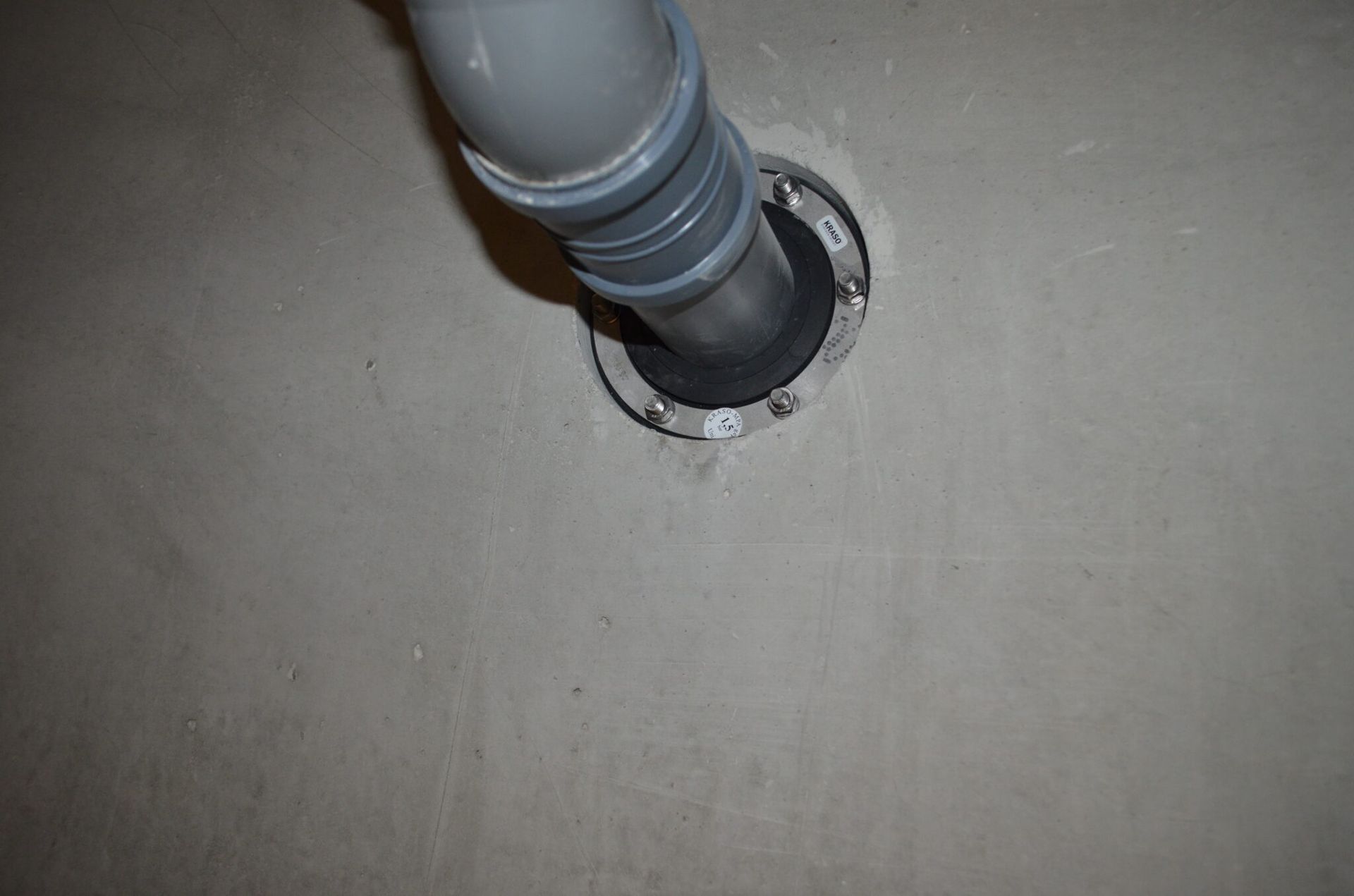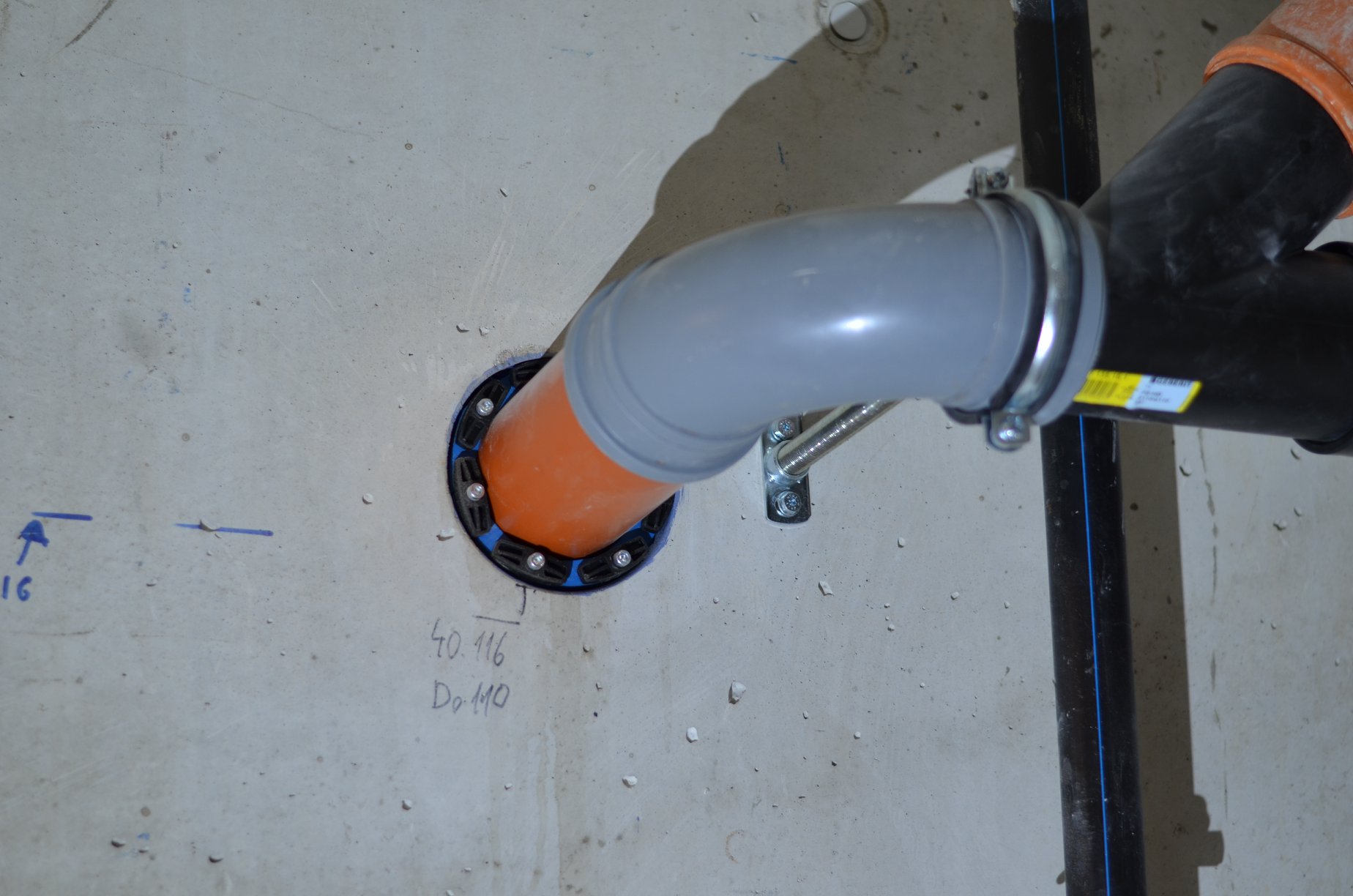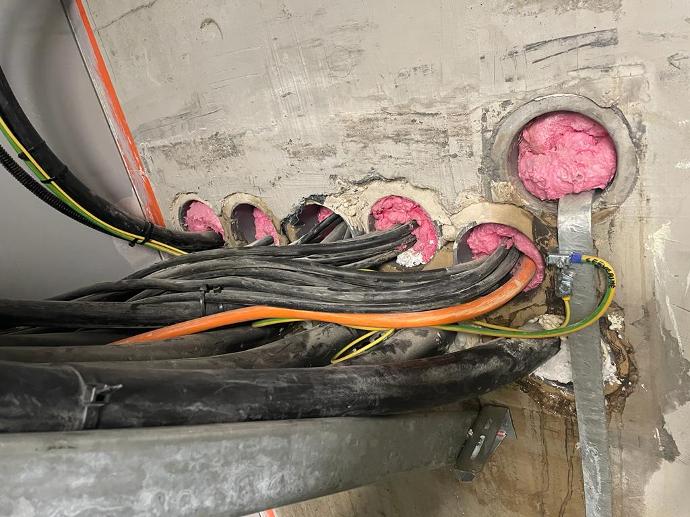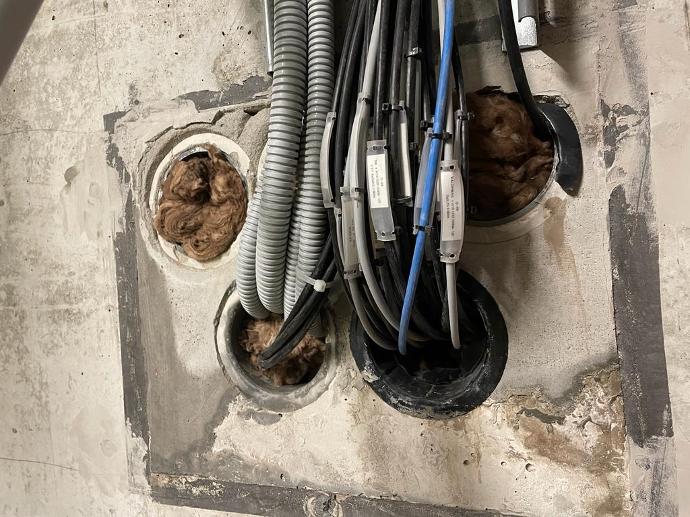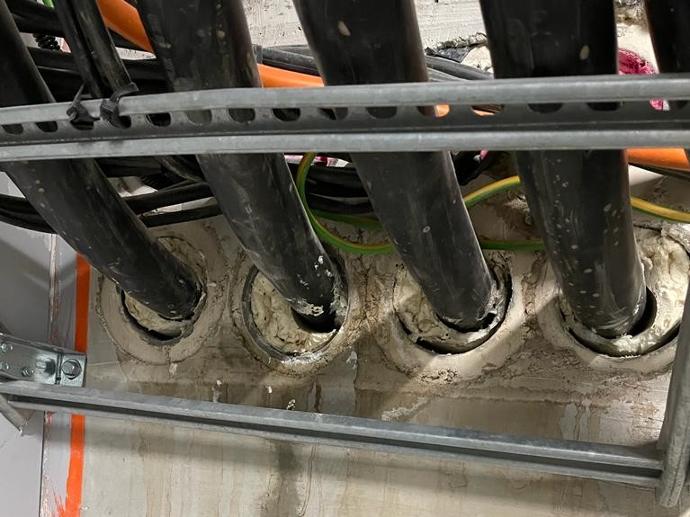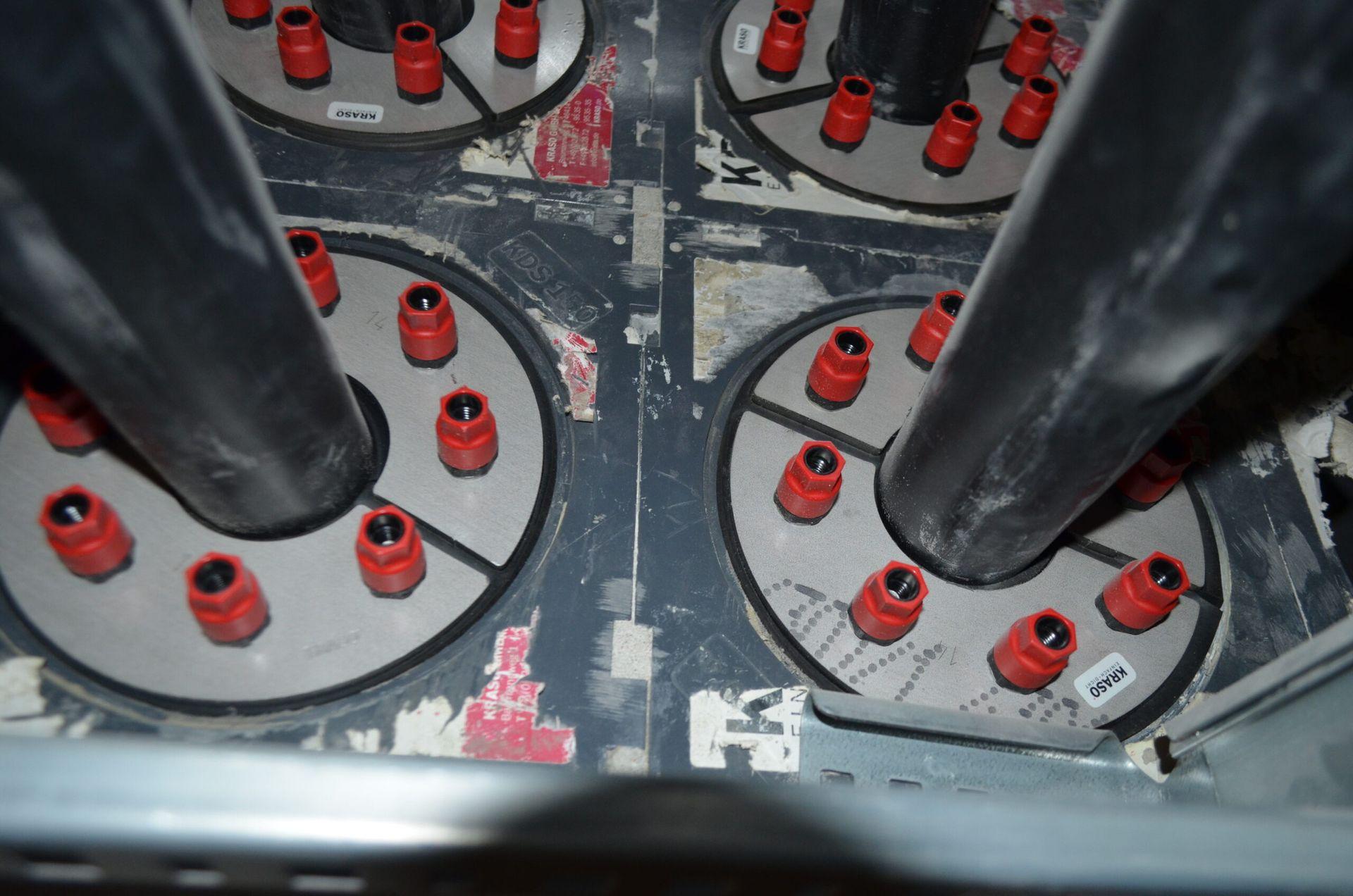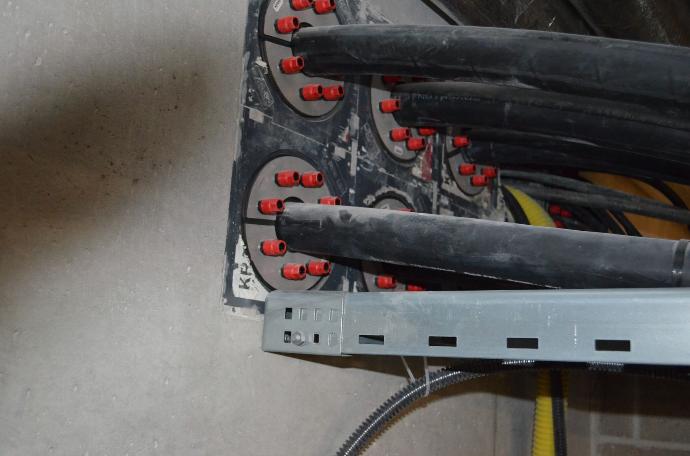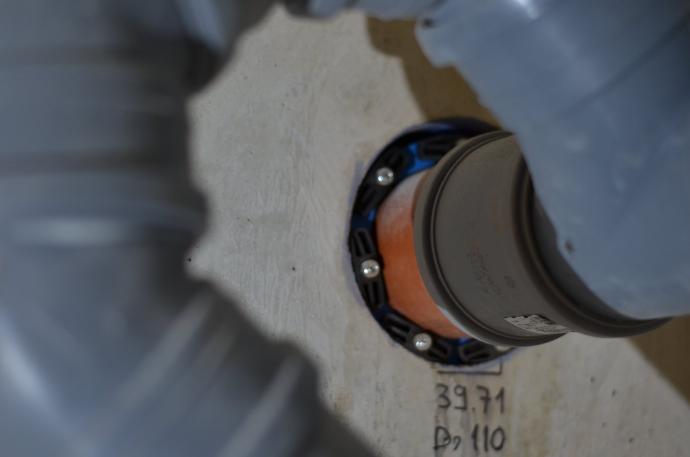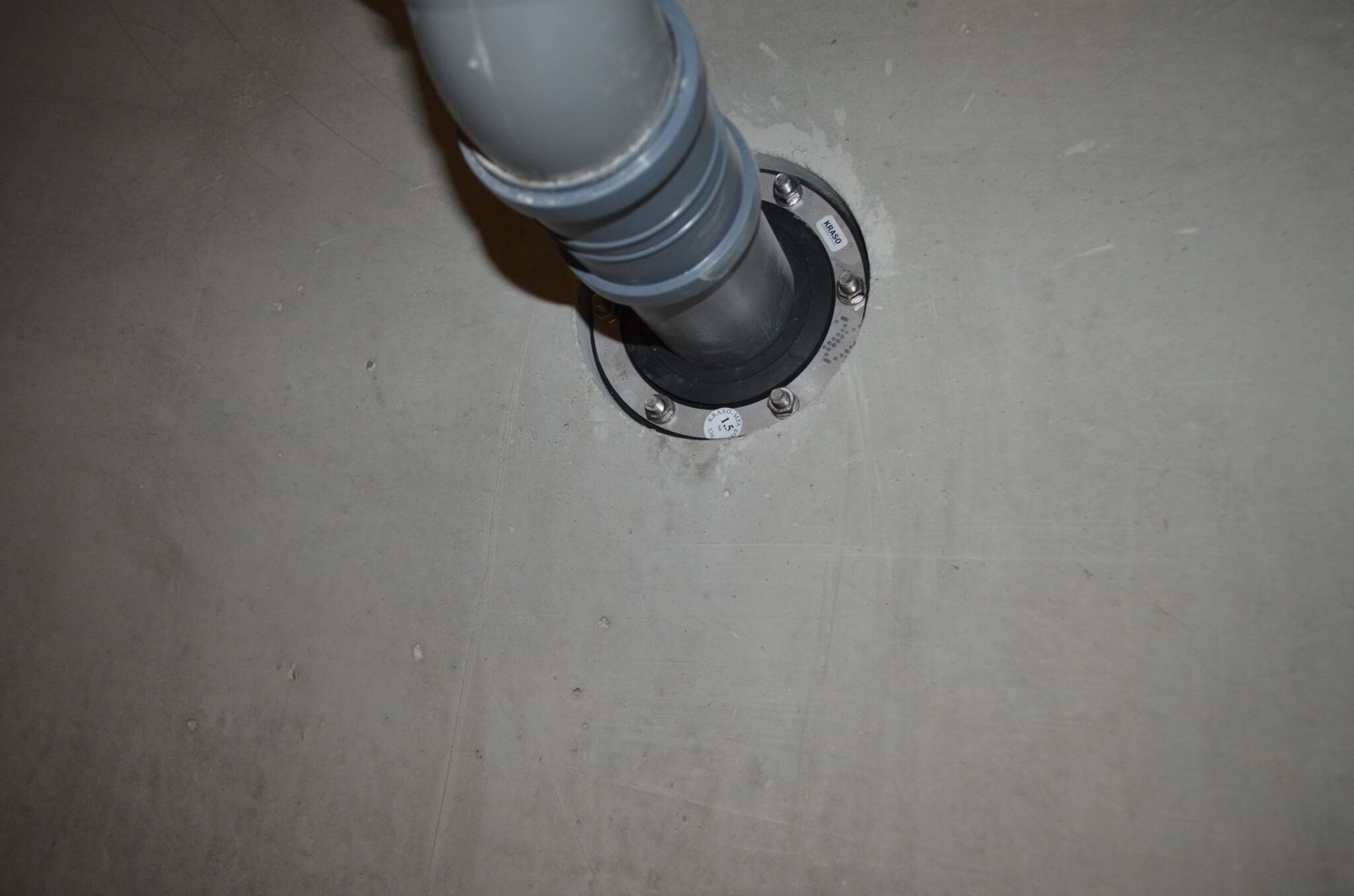If you want to pass a pipe or cable through an underground structure (wall-floor-ceiling), you can find KRASO penetration sleeves, sealing elements into the penetration sleeves, and Doyma link seals in our selection for a reliable and according to norms and regulations implementation.
The KRASO product range includes several penetration sleeves, of which type FE/MI and BDF are the most popular among our customers.
From the Doyma range, we offer a link seal as a sealing variant, of which different types allow you to find a sealing solution for many more unusual situations.
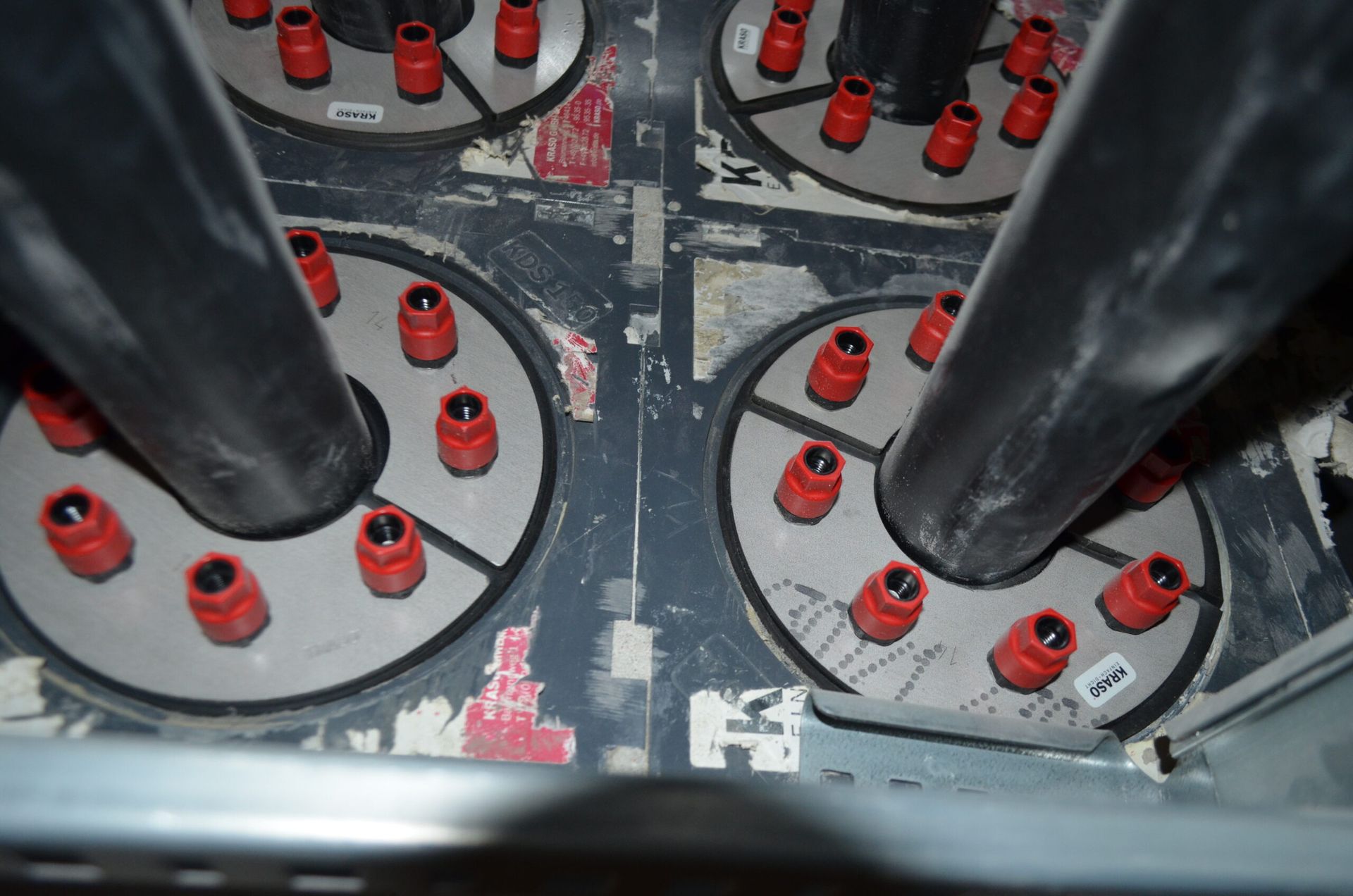

What are KRASO penetration sleeves and sealing elements?
KRASO penetration sleeves are designed for a convenient watertight passage for pipe and cable sealing elements in a cast-in-place concrete wall and floor slab. KRASO uses a simple law of physics – a strong and shock-proof plastic tube is chosen as the penetration sleeve, around which a rubber resistor protruding in four waves is added. In the case of pressurized water penetration, the protruding rubber resistor acts as a barrier in the connection between the concrete and the sleeve.
KRASO sealing elements are multi-purpose and designed for sealing various pipes and cables. Sealing elements are round rubber elements, which on both sides are added metal rings connected with bolts through the rubber seal. As the bolts are turned, the metal rings that start to move together begin to push apart the rubber gasket between them, forming a uniformly tight watertight connection between the sleeve around it and the pipes or cables that pass through it. The product range includes various types of sealing elements, and the factory can manufacture all special solutions within a short delivery time. However, we recommend consulting our specialists at the very beginning of the project so that we can find the best solution in time.
How do Doyma and KRASO solutions differ?
The Doyma link seal includes rubber elements, pressure plates, and bolts. Depending on the type and number of rubber elements, it is possible to assemble sealing solutions to different combinations for wall openings and pipes/cables. The selection is wide, but it is still not possible to offer a solution for all combinations, be sure to consult with our specialist before drilling the pipe penetrations.
The advantage of sealing links is that they can be installed around pipes that have already been set up because the link sealings are openable. However, when tightening the bolts, you must observe the specified tightening torque, be sure to use a wrench with a dynamometer! If the bolts are over-tightened, there is a risk of damaging the pipe or link seal.’
Using Doyma link seals through waterproofed pipe penetration sleeves like KRASO sealing elements is possible and even recommended.
However, for sealing components installed directly through a drilled concrete wall, it must be remembered that to prevent water from entering the structure, the link seal must be mounted to the side where the water might push inside. If the risk of corrosion is high, it is also possible to waterproof the walls of the pipe penetration against corrosion damage with the specially designed products DOYMA Curaflex 1716 (Aquagard special paint) and DOYMA Curaflex 1711 (Aquagard primer). You can ask our specialists for more information about the products and their use.
Why use a pipe penetration sleeve but not drill a pipe penetration after pouring concrete?
If you don’t have special agreements with the contractor of the pipe penetrations, drilling with the material cost is almost twice as expensive as integrating the pipe penetration sleeve into the structure before casting. Also, in favor of the pipe penetration sleeves is that if one or more pipe penetrations are milled into the concrete structure, they are also drilled through the reinforcement, which weakens the structure, and if not insulated, potential structural damage can occur. By using pipe penetrations sleeves, the reinforcement on the location of the pipe penetration can be prepared so that it does not lose its bearing properties and come into contact with water and moisture, thus eliminating both the risk of corrosion and the weakening of the structure.
Are there advantages to one product or the other?
Each product has its pros and cons – it all depends on the place and method of use.
Differences:
-
with KRASO seals, it is possible to seal even thinner electric cables. Separate sealing elements have been created for this purpose
- KRASO has switched to the click system, which no longer requires a torque wrench to achieve the correct fastening strength – the possibility of over-strengthening is eliminated
- Doyma link seal can be installed even after the pipes are installed. No need to order a special seal
- KRASO seals have a uniform metal ring on both sides, which ensures a faster, easier, and safer connection
- Seals with the KRASO klick-system can be reused
Similarities: - both solutions can be used in pipe penetrations that use penetration sleeves and a milled pipe penetration that does not have a penetration sleeve.
- for both sealing elements, it is recommended to insulate the milled penetrations walls with the corresponding materials in the case of the variant without a penetration sleeve.
When making pipe penetrations, the main advantages of using penetration sleeves are financial savings, reliability, and installation convenience. In addition, the complete solution of the penetrations (penetration sleeves + sealing element) is generally cheaper and more reliable than a pipe penetration milled after casting concrete.
However, it is necessary to pay attention to the penetration sleeves at the moment of design, and the locations of the sleeves must be planned before concreting. This gives us a lower chance of making mistakes compared to drilling later.
Here we emphasize that it is always possible to drill the penetrations, and if a penetration sleeve is in the wrong place, it can be closed with the products WFP PU Flex 35 or KÖSTER KB-Flex 200 with ASOCRET-VK30 (INDUCRET-VK30) or ASOCRET-VK100 (INDUCRET-VK100 ). Consult our specialists regarding the methods of use!
The biggest mistakes we see on construction sites related to pipe penetrations.
In more than 20 years, we have seen many different attempts at solutions, but here are the primary and most common errors and concerns:
-
the pipe penetrations are made too close to each other, where several cables are twisted together through the same penetration sleeve and waterproofed with construction foam
-
using incorrect penetration sleeves – the penetrations are made by using foam plastic as a form which later becomes oval during the casting process
-
the pipe penetration contractors are not consulted before starting the building process – the dimensions of the penetrations are incorrect in relation to the pipes and seals
- square penetrations that can not be sealed
-
the penetration sleeve (an ordinary plastic pipe that does not hold water) is sealed with construction foam or other similar material
All these situations must be fixed after construction because they do not guarantee water resistance. And such corrections are generally many times more expensive than correctly done implementation.
How do you properly plan the pipe penetrations?
We recommend using penetration sleeves with a sealing element for the most reliable solution. However, two methods are common in practice:
Penetration with penetration sleeve:
In order to ensure the correct penetration with the penetration sleeve, it is necessary to plan it as part of the work before construction. Since the penetration sleeves must be installed before casting, it is imperative to know with centimeter precision where the penetration will be made and what size it should be. Once the correct location is planned, add a sealing element when installing the pipes and cables, install them according to the proper instructions, and the job is done right. Our specialists will help you find the right solutions for your object!
Penetration without penetration sleeves:
Such a solution is popular because it does not require detailed planning. The penetration is generally milled into the wall after concrete casting when starting to install the pipes. It is definitely necessary to make sure that the correct penetrations are milled according to the sealing element – neither bigger nor smaller. In addition, it is essential to insulate the penetrations with suitable means so that the reinforcement cannot rust and break the structure. Our specialists will find the right solutions for your project!
Some examples of properly installed penetrations:
If you want to know if and how we can make your concrete structures waterproof and speed up the casting process with the “white tank” method, then contact us, and we will review the project together.
